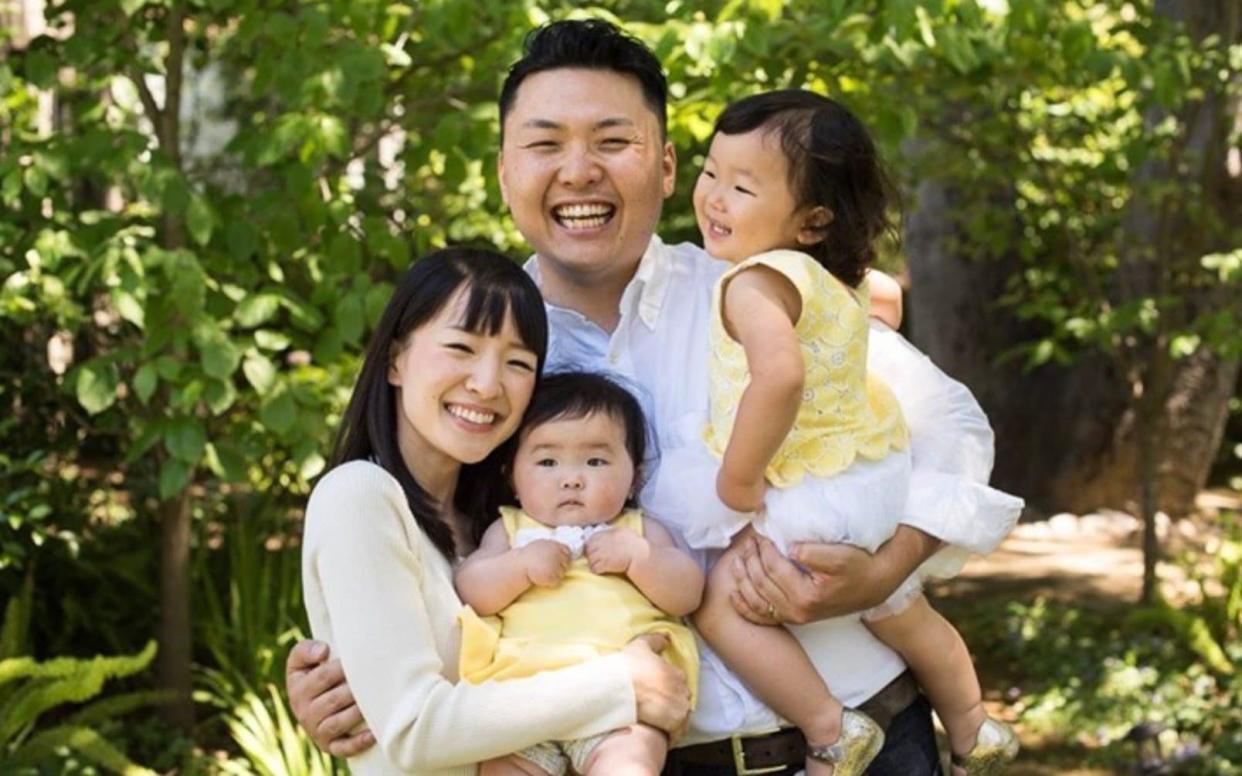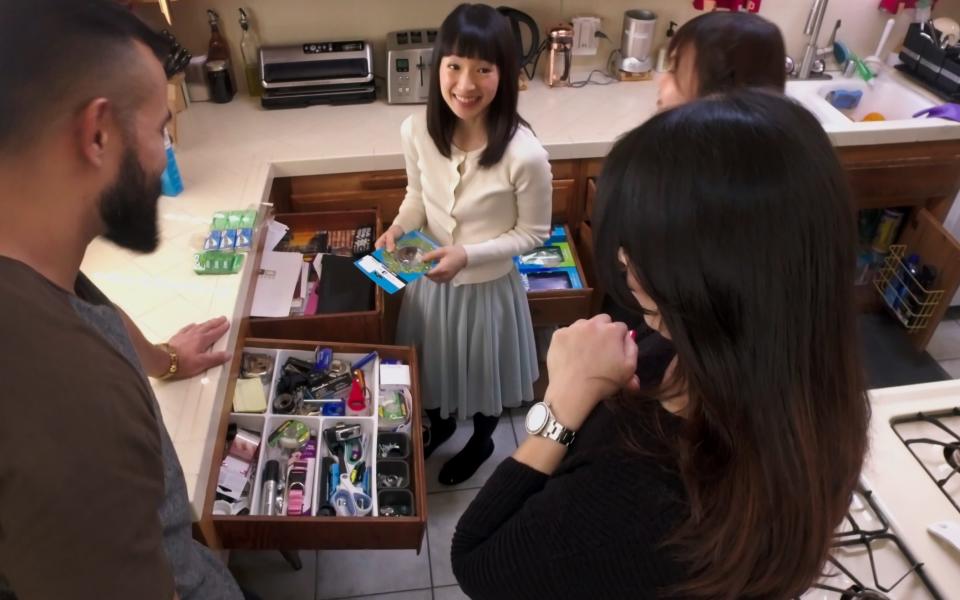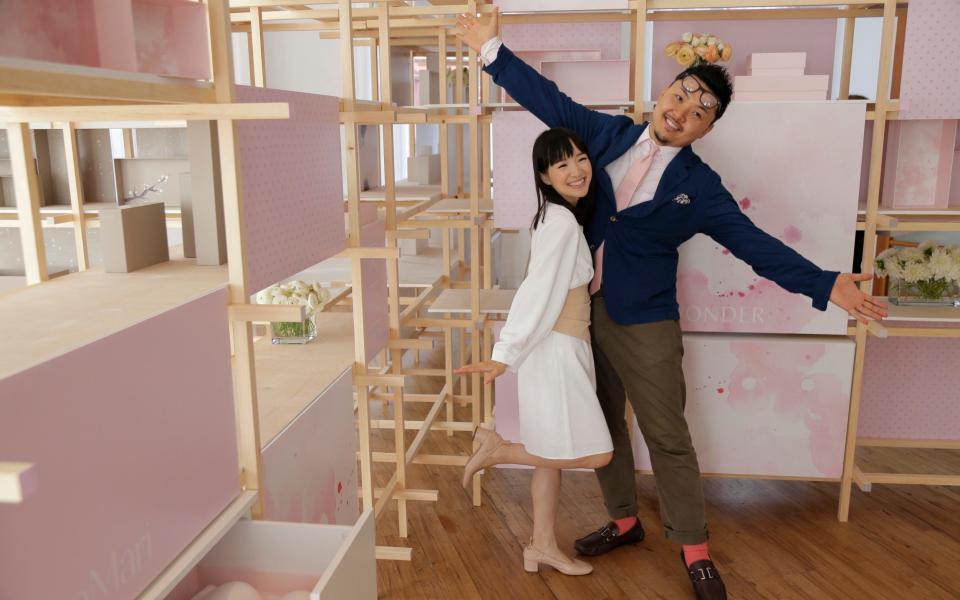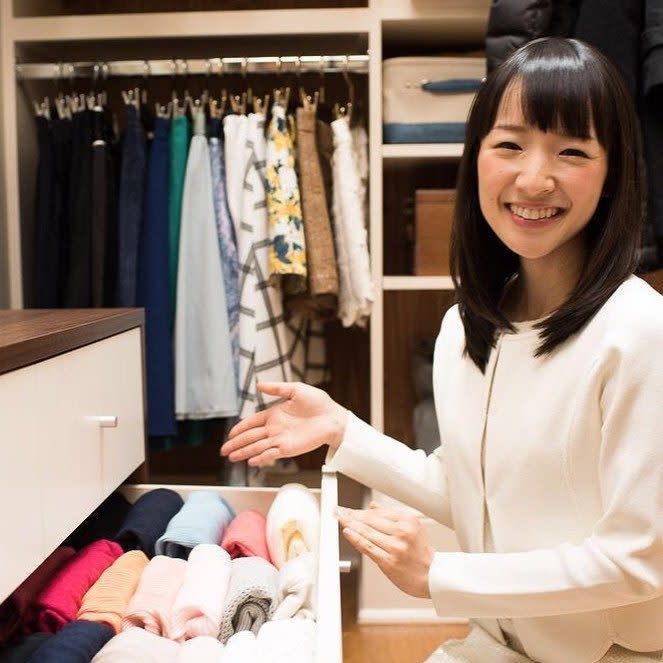Marie Kondo: After child number three, I’ve given up on tidying

For years she was seen as the queen of clean, inspiring millions around the world to declutter their houses and their lives.
But following the birth of her third child, it appears that even Marie Kondo has her limits.
The world-renowned Japanese tidying guru says her home is “messy” and she has “kind of given up” on tidying, with three children to look after.
“Up until now, I was a professional tidier, so I did my best to keep my home tidy at all times,” she said during a recent online talk.
“I have kind of given up on that, in a good way for me,” she said. “Now I realise what is important to me is enjoying spending time with my children at home.”
The tidying expert said her life changed significantly since her third child arrived in 2021.
“My home is messy, but the way I am spending my time is the right way for me at this time, at this stage of my life,” she said.
The tidying guru rose to prominence around the world with her best-selling book “The Life-Changing Magic of Tidying Up”, which has sold millions of copies worldwide.
She was also the star of a smash-hit 2019 Netflix series, “Tidying Up with Marie Kondo”, in which she taught those with messy tendencies how to get their homes in order and create a calmer living environment.

In the show, which was released in 180 countries, Ms Kondo teaches families her trademarked “KonMari Method” of tidying, which organises belongings by category. Each family member is instructed to pull out every item they own to see if it “sparks joy”. Any item that no longer “sparks joy” for its owner is thanked for its service before being donated or discarded.
But it seems her world-renowned tidying skills met their match in the form of several toddlers.
In 2020, she conceded to The Telegraph that she had underestimated how difficult it would be to keep a home tidy with children.
“I firmly believed that tidying was possible, even with children,” she said.
“But after I had my own, particularly when my daughters were one or two years old, and they were completely out of control and would overturn the shelves and make a mess, that’s when I realised it is really very difficult.”
In her 2020 book “Joy at Work: Organizing Your Professional Life”, co-written with Scott Sonenshein, she added: “Raising toddlers can be really hard, but it taught me a valuable lesson: don’t aim to keep things perfectly tidy when your children are little.”
‘I feel frazzled or am overcome’
Her latest book, released in November 2022, is “Marie Kondo’s Kurashi at Home: How to Organize Your Space and Achieve Your Ideal Life”.
In the book, Ms Kondo explores kurashi – a Japanese term roughly translating as “way of life” or “the ideal way of spending our time” – and suggests easy ways to bring calmness to daily life, such as cleaning your purse every night.
It also goes beyond tidying. The 38-year-old says she wants to help people find activities that give them peace on a deeper level and help them to embrace their ideal home and lifestyle.
Drinking tea three times a day, opening her childhood sewing box, and buying 100 per cent silk or organic cotton pyjamas are a few methods Ms Kondo uses herself.
Watch: Meet the stay-at-home mum turned professional organiser
She says she used to feel pressured to have a perfect house because of her job as a tidying expert.
Discussing her inner struggles, she writes: “Sometimes I pack my schedule so tightly I feel frazzled or am overcome with anxiety.”
Ms Kondo reportedly discovered a talent for organising aged just five, and her KonMari tidying method found popularity worldwide.
It dictates that you should declutter by only keeping objects that “spark joy” and then organise them according to a strict system, with clothes folded into neat rectangles and stored vertically in drawers and boxes to make them easier to see and reduce creasing.
In the weeks following the release of her Netflix show in 2019, charity shops across the country saw donations of clothing soar.
They said they could identify items which had come from people who had watched the show as they were folded in her signature style.
‘Does it spark joy?’
Actress Kate Hudson has described the KonMari Method as “liberating”, while Hollywood star Jamie Lee Curtis wrote that if she was ever to get a tattoo, it would carry Ms Kondo’s mantra: “Does it spark joy?”
In 2015, Ms Kondo was even named one of Time magazine’s 100 Most Influential People.
Many of her followers say her techniques have helped their mental health and that a clean and organised home helps them feel calm.
The tidying expert is married to Takumi Kawahara, a Japanese businessman who she met as a student. Mr Kawahara now works with his wife as president of KonMari Media and served as a producer on the Netflix show.

The couple live in Los Angeles with their three young children.
When her third child was born in April 2021, Ms Kondo posted on Instagram: “It’s a boy! I am over the moon welcoming this bundle of joy into our family. We are all doing well. Now comes the fun part – spending this special time with our little guy.”
Ms Kondo ran her own tidying consultation business for six years before becoming an author.
In 2021, a second Netflix series “Sparking Joy With Marie Kondo” was released.
It’s a relief to see a lifestyle trend give way to reality
By Lucy Foster
I was in my early 30s when I first came across Marie Kondo’s manifesto for less cluttered living, The Life Changing Magic of Tidying, and I was initially taken with the philosophy: fastidiously go through every item in your house, hold it in your hand, decide if it “sparks joy”, and if not, to the charity shop it goes. However, I have to admit she lost me when it got to the chapter about respecting our socks, and how balling them together is “cruel”. I don’t know about you, but my socks aren’t sentient and quite frankly, that’s the way I want it to stay.

But those first few chapters did ignite a persistent longing for a minimalist home; who wouldn’t want kitchen work surfaces unsoiled by tax bill reminders, half-done newspaper crosswords, an inexplicable packet of carrot seeds and a 50-year-old bottle of Creme de Menthe, donated by my mother. Sounds unlikely? You should come to my house. The kitchen table doesn’t fare much better: my two young children’s Play Doh, colouring books and Pokemon trading cards nestle around (but oftentimes in) the fruit bowl. Midweek, at 9pm, my husband and I eat dinner with plates on our knees as the effort of clearing space on the one surface designed for meals seems a task of Herculean proportions.
So reading that Marie Kondo has, after the arrival of her three children, “kind of given up” on cleaning and called time on her global assault on the world’s sock drawers did, I admit, awaken a certain smuggery. Because, of course, you can’t live in a clean, clutter-free house with children. They are synonymous with clutter: before they’re even born you’ve upped your stuff quotient by 500 per cent with baby rockers, bedside cots and the like. And that’s before they go to school and arrive home every day with junk models, literally made with other parents’ donated recycling, that you have to keep, because they’ve given it a face and a name and, like socks, it apparently has feelings.
That’s the trouble with all these lifestyle trends – from “clean eating” to “beige moms”. They sell you the unfeasible and then judge you by your ability to conform to the largely impossible. Sure, I could eat fava beans and organic egg white omelettes for a few days, but then I’d enter into a week of self-loathing for knocking back a bottle of red and pizza on Friday night. I could paint my home incredibly tasteful shades of taupe but it wouldn’t stop my kids trailing their sticky, jam-sandwich hands over the walls. These trends are so far removed from reality, they only serve to make you feel bad with their unachievable demands.
As Marie Kondo has clearly discovered, life with children is exactly what it should be: messy, chaotic, colourful and cluttered. Anyone who says otherwise is lying. Or has a housekeeper.

 Yahoo News
Yahoo News 
